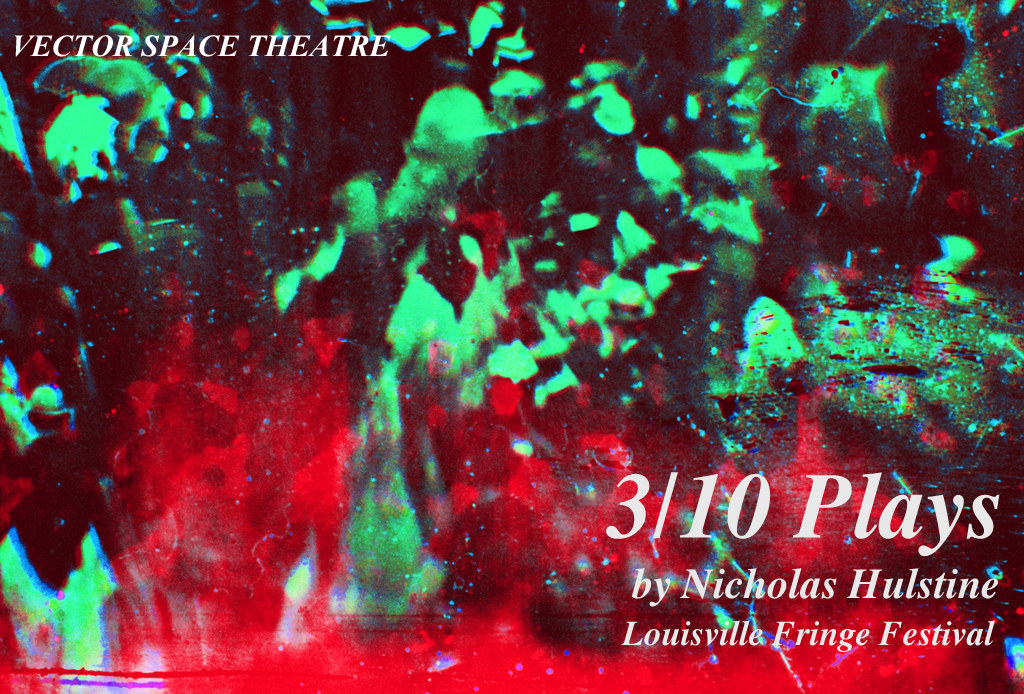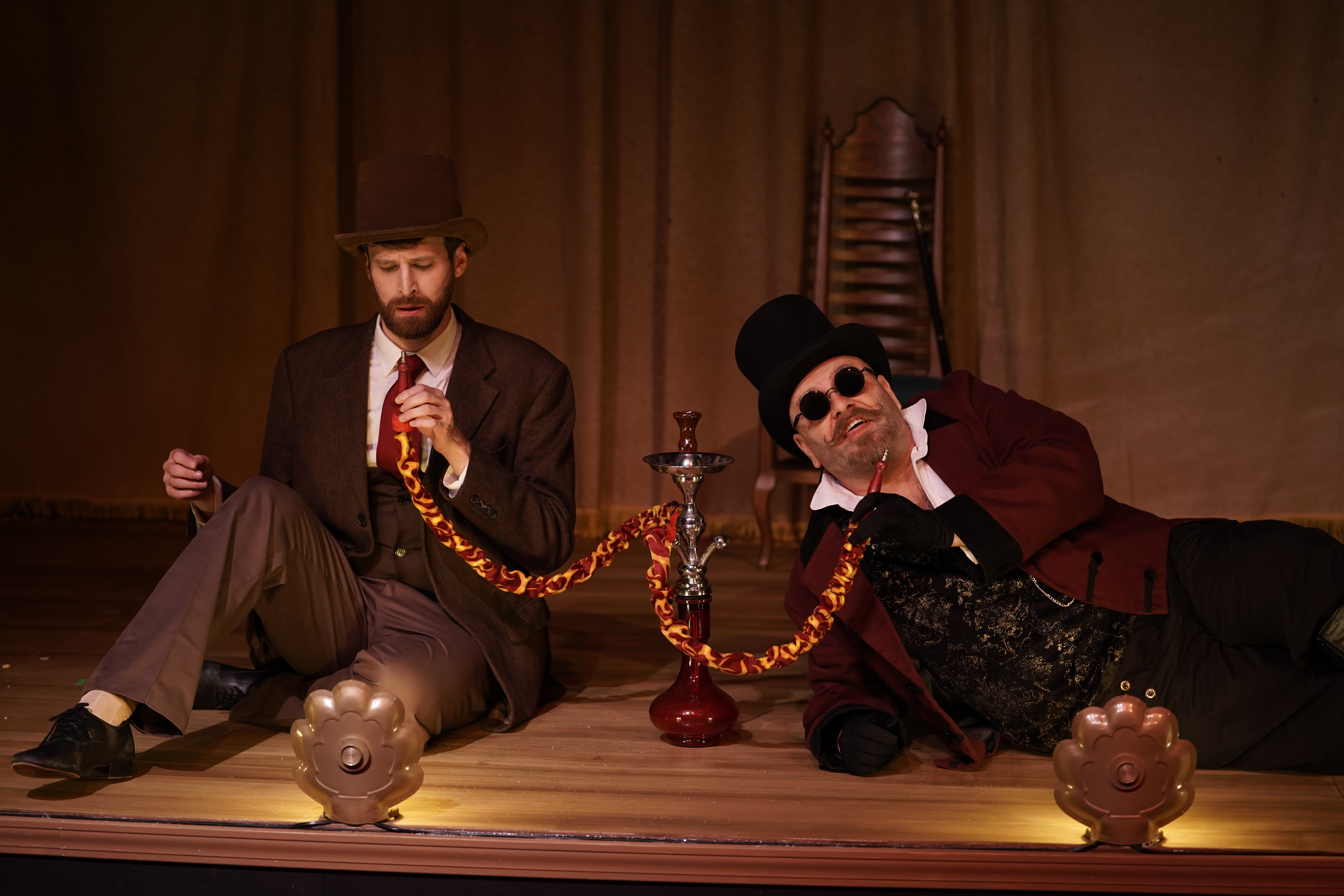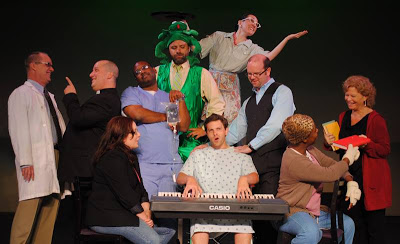November 4, 2011
Entire contents copyright © 2011, Kathi E. B. Ellis
This weekend the Louisville Ballet brings its annual Choreographers’ Showcase to our community. Performed in a semi-studio setting at the Ballet’s headquarters, the evening of thirteen new ballets, choreographed by six women and six men, gives ballet aficionados an opportunity to see dancers close-up, rather than the through the longer lens of the Whitney.
Despite a late start as downtown audiences continue to adjust to major events at the Yum! Center and, I’m sure, at least a handful of bridge issues, the evening was eventually kicked off by Artistic Director Bruce Simpson. In a tribute rare, but welcome, in most curtain speeches, he acknowledged those members of the 95-strong Ballet staff whom audiences typically don’t see. Specifically, he drew the audience’s attention to the bleachers—with new cushioning, crafted by props manager Ron Riall—producing a heartfelt round of applause before a dancer had stepped upon the stage.
The first ballet’s memory of Greece (“Memories of My Father’s Land,” Ian Poulis) introduced an unexpected poignancy to the evening against a backdrop of that country’s ongoing financial troubles. Hearkening back to an earlier decade, and the beauty and traditions of the country, this meditation skillfully interweaves ballet and the dance figures Americans recognize as Greek. Set to Greek composer Mikis Theodorakis’ music, Phillip Velinov clearly embodies the power of memory to conjure up tangible experiences. The ensemble of four men and four women energetically create the exuberant nature of community dancing (complete with voiced “opa’s”), eventually permeating the barrier between memory and present, bringing Mr. Velinov into the ensemble to participate in his own memory. The piece culminates with Mr. Velinov performing an impressive series of fouettés flanked by the ensemble.
“Mother of Hope” (Helen Daigle) changes the energy of the room immediately as we hear Erik Satie’s Gnossienne and see the more typical flowing costumes for Kateryna Sellers and Emily Reinking O’Dell. This piece is indeed a celebration of “the beauty of the female form,” as the program note proclaims. I found myself confused by the semi-narrative—are both these women mothers? And if so, is one mother to the man (Ben Needham-Wood) and one the wife? Are they both embodiments of the man’s ideal beauty?
Bringing ten company members and trainees onto the stage, “…Don’t Forget Me” (Brian Grant) is the largest piece of the evening. Mr. Grant has lots of ideas about the emotion of movement, which he explores in ever-changing combinations of two, three and four dancers, with different groups echoing and varying their vocabulary throughout the piece. There were so many combinations on stage at the same time that there were times when the piece would benefit from one less group on stage so that the audience could follow the repetitions and make the connections with more clarity.
Erica de la O’s “Parallel” is an elegant pas de deux for Rachel Cahayla-Wynne and Douglas Ruis. The music of Gaetano Gioja—an extra bonus!—was recorded by Louisville pianist Steve Crews.
“Upon Further Reflection” (Sarah Farnsley) began in silence and demonstrated (as did several pieces) how much can be achieved with only two or three lighting instruments and controlling the level of regular studio lighting. There was a palpable sense of something not quite right from the very beginning of this compelling ensemble piece. The original music by Max Wanderman set the tone of incipient ominous-ness throughout, lightening—briefly—at the one moment when it seemed that connection and hopefulness was possible. Ms. Farnsley achieved a sense of aloneness within a group setting, even when movements and gestures were repeated across different groupings.
In another shift of energy—a signature of the whole evening, shaping our journey and enhancing our experience of all and each of the pieces—Carrie Patterson brought us the charming and amusing “T’es La Seule” to music of The Books. Caroline Betancourt and Evgeni Dokoukine were a delightful pair to watch as they negotiated communication and connection. There was a sense of fun and humor both between them and between the dancers and the music.
The first half of the evening concluded with Brandon Ragland’s “Stalemate,” another ensemble piece, and one of two pieces to use music of Philip Glass. I found myself wondering about what made this piece a stalemate, while enjoying at an abstract level the dancers’ work.
“Beauty” (Erica De La O’s second offering of the evening) brought us back at the beginning of the second half. This is an exquisite étude offered in silhouette. Ms. Reinking O’Dell, beautiful in late pregnancy, demonstrates just how critical detail and specificity are—the movement of a finger, the tilt of a shoulder, the curve of an arm, each clarified and magnified on the temporary screen, behind which she danced, illumined by a single upstage light source. It felt like the audience held its collective breath during this, as though the slightest interruption would shatter the delicacy of this work.
“Chaos Theory” (Ashley Thursby) sets four pairs of dancers in a series of sequences that ripple through the pairs. The program note suggests that there is one pair of dancers that oversets the equilibrium of the group, and another pair that re-establishes the group strength. Last night, who these pairs are and when their actions happen was not as clear as it might be. Ms. Thursby is working on an interesting concept, articulated through visually compelling figures, that bears more exploring.
Robert Dunbar brings us another celebration of women’s movement in “Siren Song.” This is an eloquent succession of dance phrases grouping the six women in various combinations throughout. The lingering presence of the luminous Ms. O’Dell as this Song ends suggests to us a next generation of women’s movement is, indeed, waiting in the wings.
Ben Needham-Woods’ revisioning of the classical myth “Apollo and Daphne,” inspired by the Bernini sculpture, was intense and disturbing through Douglas Ruiz’s and Erica De La O’s interpretation. The choreography brings the two dancers together in a series of poses and sequences that are filled with both intimacy and tension. There is a moment when Mr, Ruiz advances downstage towards Ms. De La O, standing with her back to him, and his shadow is cast large against the backdrop, an incipient threat of which Daphne is unaware. The piece begins and ends with the same phrase, a chilling suggestion of how rape disempowers women.
The brightness and jauntiness of “Push” (Ryan Stokes) was a necessary emotional shift to the evening. The ensemble clearly enjoyed the opportunity to play with the music, going with the “push” that the music gave them, reflecting dance styles of previous eras.
Juanita Araque’s “Sail” brought yet another combination of dancers together in an ensemble piece which the, primarily, trainees danced with élan.
The culmination of the evening was Rob Morrow’s sweet and exuberant celebration of all things Muppets. While I had not necessarily expected, or felt the need for, such full costuming for all the pieces in “The Rainbow Connection,” I found myself looking for more bright colors than just the quintessential green. The ensemble clearly reveled in this lighthearted tribute to a childhood staple. Mr. Morrow’s series of divertissements joyously captures a child’s sense of play and wonder, and the gentle trusting of those we love and who love us.
The strength of this annual celebration of the next generation of choreographers is so many members of the full company and trainees participating in their peers’ works. Across a program of so many different styles, all the dancers fully committed to the vision of each of the choreographers. That there are twelve artists within the Louisville Ballet (full company members and trainees) who are interested in choreography is impressive; that the company invests significant time and resources to supporting them is even more impressive. One more time, I can only conclude that the future of ballet is in excellent hands under the leadership of Bruce Simpson.
Louisville Ballet
315 E. Main Street
Louisville, KY 40202
http://www.louisvilleballet.org/




